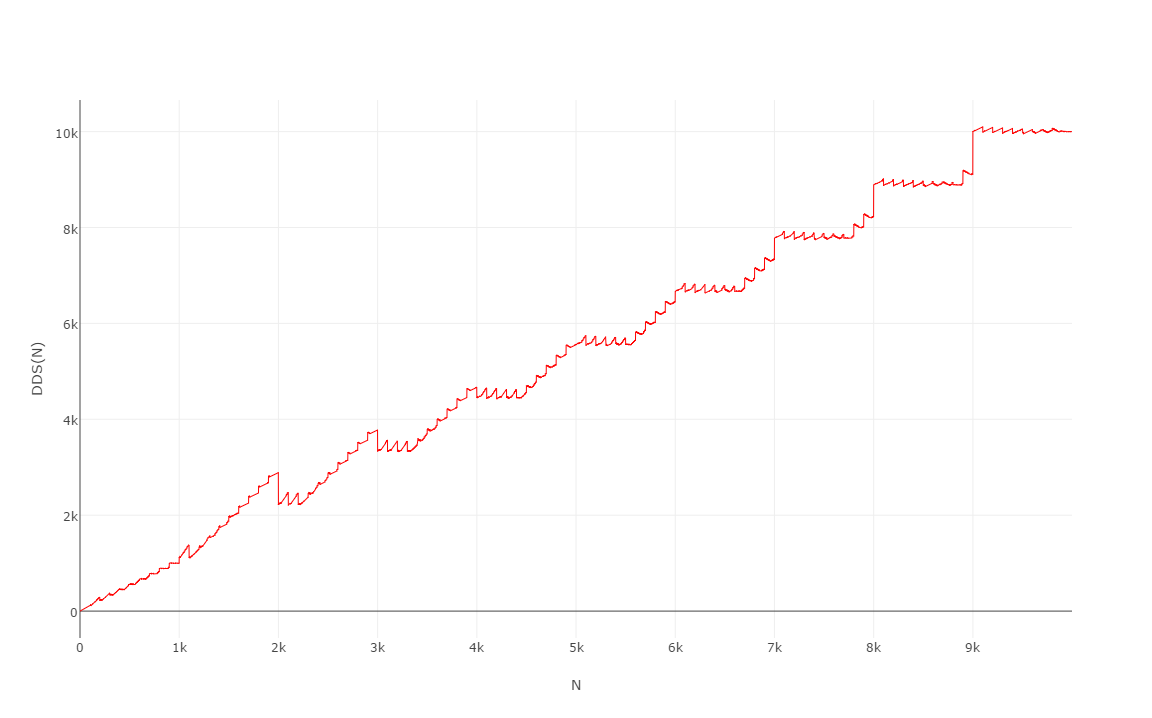Consider taking some non-negative integer such as 8675309 and computing the absolute values of the differences between all the pairs of neighboring digits.
For \$8675309\$ we get \$|8-6| = 2\$, \$|6-7| = 1\$, \$|7-5| = 2\$, \$|5-3| = 2\$, \$|3-0| = 3\$, \$|0-9| = 9\$. Stringing these results together yields another, smaller non-negative integer: \$212239\$. Repeating the process gives \$11016\$, then \$0115\$, which by the convention that leading zeros are not written simplifies as \$115\$, which becomes \$04\$ or \$4\$, which can't be reduced any further. Summing all these values up we get \$8675309 + 212239 + 11016 + 115 + 4 = 8898683\$.
Let's define the Digit Difference Sum (or DDS) as this operation of repeatedly taking the digit differences of a number to form a new number, then adding all the resulting numbers to the original.
Here are the first 20 values in the corresponding DDS sequence:
N DDS(N)
0 0
1 1
2 2
3 3
4 4
5 5
6 6
7 7
8 8
9 9
10 11
11 11
12 13
13 15
14 17
15 19
16 21
17 23
18 25
19 27
Here are the first 10000 values, the graph for which is quite curious:
Especially since it looks the same when you plot it to 1000 or even 100:
(I'd call it the dentist's staircase...)
Challenge
Write a program or function that takes in a non-negative integer and prints or returns its DDS value. For example, if the input was 8675309, the output should be 8898683.
The shortest code in bytes wins.










